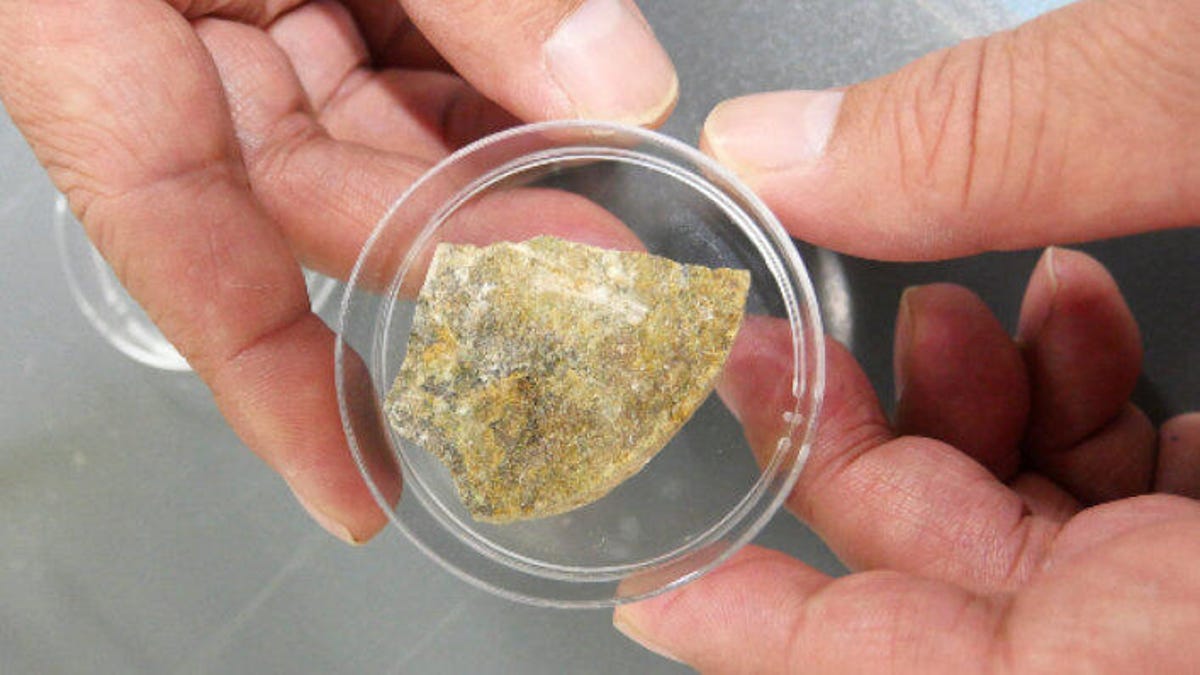Deep-sea rocks on Earth spark new hope for finding life on Mars
"I thought it was a dream," the lead scientist says.

This rock sample came from the deep ocean.
If there is (or once was) microbial life on Mars, it's been hiding from our robotic explorers. Thanks to a determined scientist, we may have a better idea of how to go about looking for it.
This microscopic view shows a sample of rock taken from beneath the sea floor. The image on the right is magnified more and shown under fluorescent light. The bacteria is in green and the clay minerals in orange.
University of Tokyo geomicrobiologist Yohey Suzuki spent a decade examining ancient volcanic rocks culled from the deep sea while on a hunt for elusive bacterial life. He finally found it by peering into the cracks.
"I thought it was a dream, seeing such rich microbial life in rocks," Suzuki said in a University of Tokyo release on Thursday.
The rock samples came from several locations beneath the floor of the Pacific Ocean in 2010. The basalt rocks ranged from between 13.5 million and 104 million years old and were formed by undersea volcanoes.
Suzuki originally tried to find bacterial life by breaking apart the rocks and grinding up the material from the middle, but to no avail.
Later, Suzuki and his team tried a new method: stabilizing the rocks with epoxy and cutting off thin sheets that could be viewed under a microscope. The researchers combined that with a dye that makes DNA pop out. And pop out it did.
The scientists spotted bacteria densely packed into minuscule cracks filled with clay minerals.
"These cracks are a very friendly place for life." Suzuki said. "Clay minerals are like a magic material on Earth; if you can find clay minerals, you can almost always find microbes living in them."
The researchers published their findings in the journal Communications Biology.
Mars is home to clay mineral deposits. NASA's Curiosity rover has recently been exploring a "clay-bearing unit" on the Red Planet. Suzuki is now teaming up with NASA's Johnson Space Center to come up with ways to study rocks on Mars in hopes of unveiling the same sort of secrets he discovered in Earth's ocean depths.
"I am now almost over-expecting that I can find life on Mars," Suzuki said.

